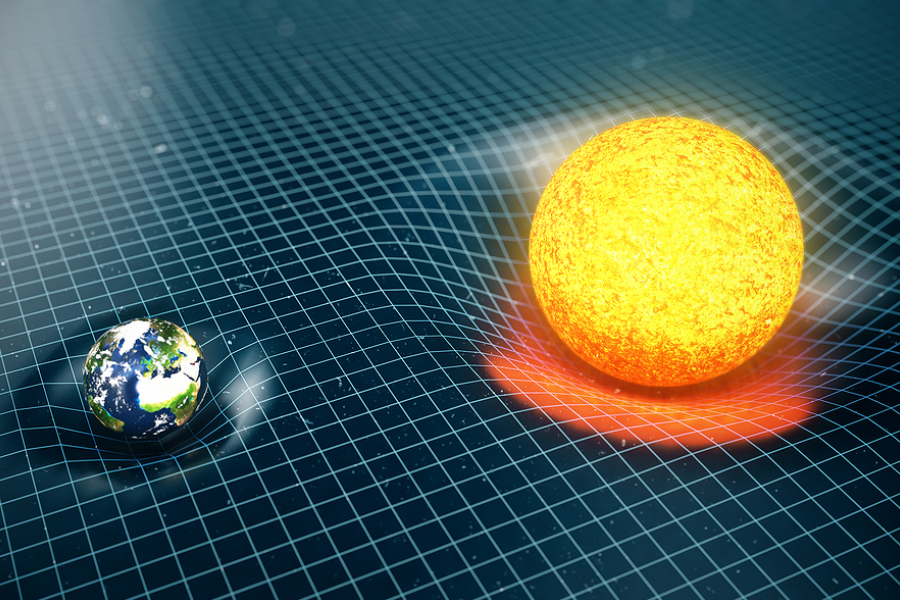How General Relativity Changed Our View of Gravity

In 1915, Albert Einstein revolutionised our understanding of gravity with his theory of General Relativity. This groundbreaking theory did more than just refine Newtonian gravity; it fundamentally altered our comprehension of the universe, influencing everything from the movement of planets to the warping of spacetime itself.
Read on as we delve into how General Relativity reshaped our view of gravity and its profound implications on modern physics.
The newtonian view of gravity
Before Einstein, Sir Isaac Newton's law of universal gravitation was the cornerstone of our understanding of gravitational forces. Newton described gravity as a force that acts across space, where each mass attracts every other mass with a force that is proportional to the multiplication of their masses and inversely related to the square of the distance separating them. This framework was remarkably successful in explaining a wide range of phenomena, from the falling of an apple to the orbits of planets.
Newton’s theory, however, had its limitations. One significant issue was its inability to explain the precession of Mercury’s orbit precisely. Additionally, the concept of action at a distance—where gravitational forces act instantaneously across space—left physicists searching for a more comprehensive explanation that aligned with the finite speed of information transfer suggested by the theory of electromagnetism.
Einstein’s radical departure
Einstein’s theory of General Relativity proposed a radically different conception of gravity. Instead of viewing gravity as a force between masses, Einstein described it as a curvature of spacetime caused by mass and energy. This curvature tells objects how to move—essentially, objects follow the straightest possible paths in curved spacetime, known as geodesics.
The essence of General Relativity is encapsulated in Einstein's field equations, which relate the distribution of mass and energy to the curvature of spacetime. These equations are remarkably complex, but their implications can be illustrated with the iconic analogy of a trampoline. Imagine a heavy ball placed on a trampoline, creating a depression. A smaller ball placed nearby will roll towards the depression, not because it is pulled by an invisible force, but because the fabric of the trampoline is curved.
Key predictions and confirmations
One of the most significant predictions of General Relativity was the bending of light by gravity, known as gravitational lensing. According to the theory, light passing near a massive object would follow the curvature of spacetime, resulting in a deflection from its straight path. This was confirmed during the solar eclipse of 1919 when light from stars passing near the sun was observed to bend, precisely as Einstein had predicted.
Another major prediction was the existence of black holes, regions of spacetime where gravity is so intense that not even light can escape. The concept of black holes emerged from solutions to Einstein’s equations, such as the Schwarzschild solution, which described the spacetime geometry around a spherical, non-rotating mass. The indirect detection of black holes and, more recently, the direct observation of gravitational waves from black hole mergers have provided compelling evidence for this prediction.
General Relativity also explained the anomalous precession of Mercury's orbit. The curvature of spacetime near the sun, as described by Einstein’s equations, accounted for the small discrepancies that Newtonian mechanics could not. This precise agreement with observations was one of the earliest triumphs of the theory.
Impact on cosmology and modern physics
General Relativity has had a profound impact on cosmology, the study of the universe as a whole. The theory laid the groundwork for the Big Bang model, describing an expanding universe that originated from a hot, dense state. Einstein’s equations showed that a static universe, as he initially believed, was unstable, leading to the acceptance of a dynamic cosmos that evolves over time.
The expansion of the universe was first observed by Edwin Hubble in the 1920s, providing strong evidence for the Big Bang theory. Further developments in cosmology, such as the discovery of cosmic microwave background radiation, have continually reinforced the framework established by General Relativity.
Modern physics continues to explore the implications of General Relativity. The quest for a unified theory that reconciles General Relativity with quantum mechanics—the theory governing the subatomic realm—remains one of the most significant challenges. Concepts such as string theory and loop quantum gravity are active areas of research, aiming to provide a coherent description of gravity at all scales.
Conclusion
General Relativity has fundamentally changed our understanding of gravity, transforming it from a force acting at a distance to a manifestation of spacetime curvature. This shift has not only explained a plethora of astrophysical phenomena but also opened new avenues of research in cosmology and quantum gravity. As we continue to explore the universe and deepen our understanding of how gravity works, the insights provided by Einstein's theory remain indispensable.
For students grappling with these complex concepts, understanding General Relativity can be particularly challenging. Physics tuition, especially at the Junior College (JC) level, can provide crucial support. Expert tutors can help demystify the intricate mathematics and abstract concepts, making them more accessible and engaging. Through tailored JC Physics tuition, students can gain a deeper appreciation of how theories like General Relativity continue to shape our understanding of the universe.